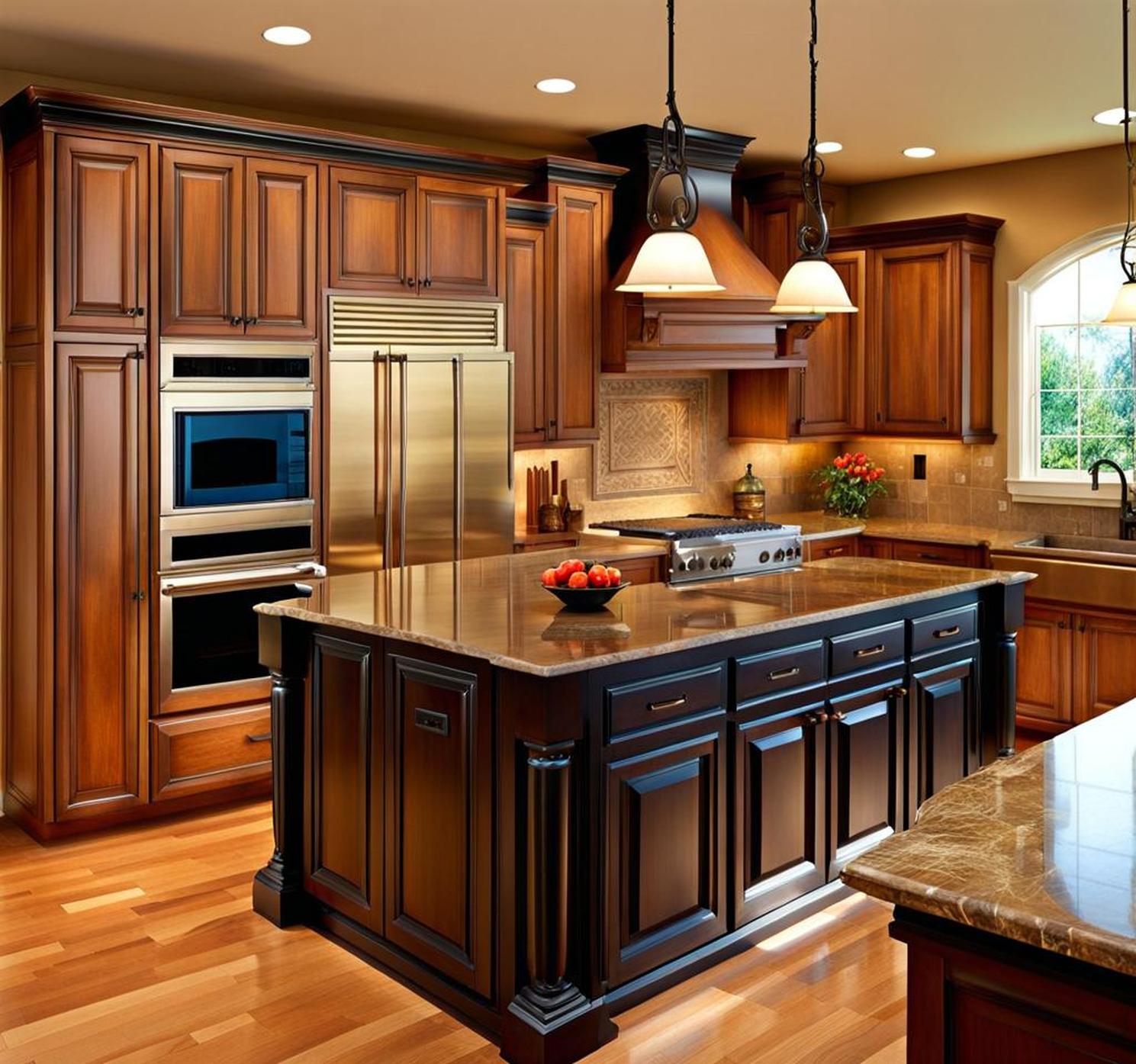Islands are centerpiece gems in traditional kitchen designs. These multifunctional islands blend storage, workspace, and seating with custom details that add character to vintage-inspired kitchens. From the island shape and size to the finish materials and ornate accents, traditional islands allow you to embrace old-world charm.
Keep reading for tips to craft your dream traditional kitchen island. We’ll explore popular footprint options, clearance guidelines, usage considerations, and ways to incorporate classic design elements. With these ideas, you can create a timeless, functional island that becomes the heart of your traditional kitchen.

Shape and Size: Choosing Your Island’s Footprint
The shape of your kitchen island directly impacts function and visual appeal. Consider the size and layout of your space when selecting an island footprint. Here are some top traditional kitchen island shapes:
Rectangular Islands
A rectangular island parallel to kitchen cabinets creates a streamlined look. This classic shape maximizes prep and dining space. Rectangular islands measuring 6-10 feet long suit many floorplans.
Square Islands
Square islands with rounded corners blend well with round dining tables in traditional spaces. Opt for a 4-6 foot width to allow traffic flow around the island perimeter.
Oval and Curved Islands
An oval or curved island adds soft, inviting lines to a traditional kitchen. Size the curved edges to allow at least a 42-inch walkway clearance.
L-Shaped Islands
An L-shaped island creates ample seating, prep, and storage space. Allow a 42-60 inch clearance between legs of the L-shape for traffic flow.
Function and Storage: Usage Considerations
A thoughtfully designed traditional kitchen island seamlessly blends form and function. Consider how you’ll use your island when planning the layout.
Cooking and Prep Space
Incorporate at least 16-18 inches of countertop space on each usable side of your island. This allows easy meal prep tasks without feeling crowded.
Casual Dining and Seating
Allow 24-30 inches of clearance around any island seating. Opt for removable stools for flexible spacing when not in use. Swivel chairs maximize functionality.
Extra Storage Solutions
Incorporate cabinets, drawers, shelves, and other storage options to maximize your island’s functionality. Pull-outs, spice racks, and other specialty organizers streamline storage.
Material Selection: Countertops and Cabinets
The materials you choose for your traditional kitchen island directly impact the overall aesthetic. Select finishes that align with the kitchen’s style.
Countertops
- Granite, especially darker neutral tones, suits traditional designs.
- Marble offers an elegant and timeless look, though it requires more maintenance.
- Quartz provides a stone-like look without the higher maintenance.
- Butcher block evokes heritage charm, but requires oiling to prevent stains.
Cabinetry
- Stained wood cabinets in oak, cherry, or maple suit the vintage style.
- Painted finishes in whites or creams lighten the look.
- Glass-front cabinets enable displaying heirloom dishware.
Design Details: Personalizing with Embellishments
Ornate accents and custom details allow you to put your personal stamp on a traditional kitchen island. Consider adding:
Island Supports
- Turned wood corbels
- Carved bracket feet
- Fluted column details
- Tapered or curved legs
- Stone or metal base structures
Embellished Edges
- Ogee, scalloped, or eased countertop edges
- Waterfall island edges
- Contrasting countertop materials as an inlay border
Backsplashes and Lighting
- Subway tile, patterned tiles, or mural backsplashes
- Pendant lights suspended over the island
- Sconces or accent lighting
When designing a traditional kitchen island, blend classic elements with modern conveniences. Incorporate vintage charm through the footprint, finishes, and embellishments you select. Keep proportions balanced and allow adequate circulation space. Most importantly, let your island reflect your personal style while remaining timeless. With these tips, you can craft an island oasis that becomes the beloved heart of your traditional kitchen.
